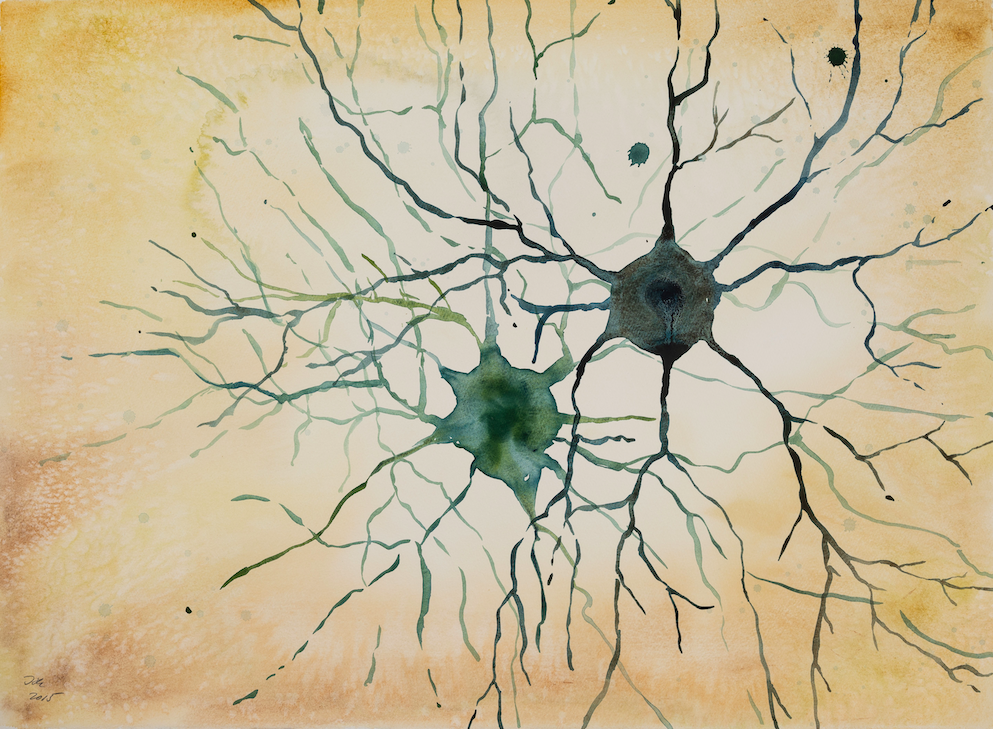Publications
Here is a selection of publications where different laminin isoforms were used to create more authentic cell culture systems.
Predictive Markers Guide Differentiation to Improve Graft Outcome in Clinical Translation of hESC-Based Therapy for Parkinson’s Disease
Kirkeby A., Nolbrant S., Tiklova K., Heuer A., Kee N., Cardoso T., Rylander Ottosson D., Lelos M.J., Rifes P., Dunnett S.B., Grealish S., Perlmann T., Parmar M. Cell Stem Cell, 2016
Here, the authors developed a good manufacturing practice (GMP) differentiation protocol for the highly efficient and reproducible production of transplantable dopamine progenitors from hESCs on laminin-111. They identified predictive markers expressed in dopamine neuron progenitors that correlate with graft outcome in an animal model of Parkinson’s disease. Timed FGF8b resulted in a high yield of caudal VM cells and good graft outcomes correlate with markers of caudal VM and MHB. Commonly used markers did not accurately predict in vivo subtype-specific maturation. Instead, we identified a specific set of markers associated with the caudal midbrain that correlate with high dopaminergic yield after transplantation in vivo. Using these markers, GMP-adapted dopamine differentiation protocol was developed.
Generation of high-purity human ventral midbrain dopaminergic progenitors for in vitro maturation and intracerebral transplantation
Nolbrant S., Heuer A., Parmar M., Kirkeby A. Nature Protocols, 2017
Generation of precisely patterned neural cells from human pluripotent stem cells (hPSCs) is instrumental in developing disease models and stem cell therapies. Here, the authors provide a detailed 16-d protocol for obtaining high-purity ventral midbrain (VM) dopamine (DA) progenitors for intracerebral transplantation into animal models and for in vitro maturation into neurons. They have successfully transplanted such cells into the rat; however, in principle, the cells can be used for transplantation into any animal model, and the protocol is designed to also be compatible with clinical transplantation into humans. They show how to precisely set the balance of patterning factors to obtain specifically the caudal VM progenitors that give rise to DA-rich grafts. By specifying how to perform quality control (QC), troubleshooting, and adaptation of the procedure, this protocol will facilitate implementation in different laboratories and with a variety of hPSC lines. To facilitate the reproducibility of experiments and enable the shipping of cells between centers, the authors present a method for cryopreservation of the progenitors for subsequent direct transplantation or terminal differentiation into DA neurons. This protocol is free of xeno-derived products and can be performed under good manufacturing practice (GMP) conditions.
Neuronal Replacement as a Tool for Basal Ganglia Circuitry Repair: 40 Years in Perspective
Björklund A. and Parmar M. Front. Cell. Neurosci., 2020
In this review article, the authors give an overview of past and current efforts to restore damaged connectivity in the adult mammalian brain using implants of fetal neuroblasts or stem cell-derived neuronal precursors. Focus on strategies aimed to repair damaged basal ganglia circuitry induced by lesions that mimic the pathology seen in humans affected by Parkinson’s or Huntington’s disease.
Single cell transcriptomics identifies stem cell-derived graft composition in a model of Parkinson’s disease
Tiklová K., Nolbrant S., Fiorenzano A., Björklund Å.K., Sharma Y., Heuer A., Gillberg L., Hoban D.B., Cardoso T., Adler A.F., Birtele M., Lundén-Miguel H., Volakakis N., Kirkeby A., Perlmann T., Parmar M.
Cell replacement for the treatment of Parkinsonʼs disease (PD) can be obtained from fetal brain tissue or from stem cells. However, after transplantation, dopamine (DA) neurons are seen to be a minor component of grafts, and it has remained difficult to determine the identity of other cell types. Here, the authors use single-cell RNA sequencing (scRNA-seq) combined with histological analyses to characterize intracerebral grafts from ventral midbrain (VM)-patterned human embryonic stem cells (hESCs) and VM fetal tissue after long-term survival and functional maturation in a preclinical rat model of PD. Neurons and astrocytes were shown to be major components in both fetal and stem cell-derived grafts but oligodendrocytes are only detected in grafts of fetal tissue. On the other hand, a cell type closely resembling a class of newly identified perivascular-like cells is identified as a previously unknown component of hESC-derived grafts.
An Optimized Protocol for the Generation of Midbrain Dopamine Neurons under Defined Conditions
Gantner C.W., Cota-Coronado A., Thomp L.H.STAR Protocols, 2020
Here, the authors describe a xeno-free, feeder-free, and chemically defined protocol for the generation of ventral midbrain dopaminergic (vmDA) progenitors from human pluripotent stem cells (hPSCs). This simple-to-follow protocol results in high yields of cryopreservable dopamine neurons across multiple hPSC lines. Wnt signaling is the critical component of the differentiation and can be finely adjusted in a line-dependent manner to enhance the production of dopamine neurons for the purposes of transplantation, studying development and homeostasis, disease modeling, drug discovery, and drug development.
β1 Integrin Maintains Integrity of the Embryonic Neocortical Stem Cell Niche
Loulier et al.
PLOS, 2009Hippocampal neurons: Laminin chain expression suggests that laminin-10 is a major isoform in the mouse hippocampus and is degraded by the tissue plasminogen activator/plasmin protease cascade during excitotoxic injury
Indyk et al.
Neuroscience, 2003Transcriptomes of germinal zones of human and mouse fetal neocortex suggest a role of extracellular matrix in progenitor self-renewal
Fietz et al.
PNAS. 2012.Laminin enhances the growth of human neural stem cells in defined culture media
Hall et al.
BMC Neuroscience, 2008Adult SVZ Stem Cells Lie in a Vascular Niche: A Quantitative Analysis of Niche Cell-Cell Interactions
Shen Q., Wang Y., Kokovay E., Lin G., Chuang S-M. Goderie S.K., Roysam B., Temple S. Cell Stem Cell, 2008
Here, they examine the relationship of adult SVZ NSC lineage cells to blood vessels using confocal imaging of SVZ whole mounts in which the normal 3D relationships of cells are preserved. Neural stem cells (NSCs) in the adult subventricular zone (SVZ) lie close to blood vessels in a vascular-derived laminin-rich niche. Cells expressing stem cell markers, including GFAP, and proliferation markers are closely apposed to the laminin-containing extracellular matrix (ECM) surrounding vascular endothelial cells. Adult SVZ progenitor cells express the laminin receptor a6B1 integrin, and blocking this inhibits their adhesion to endothelial cells, altering their position and proliferation in vivo.
